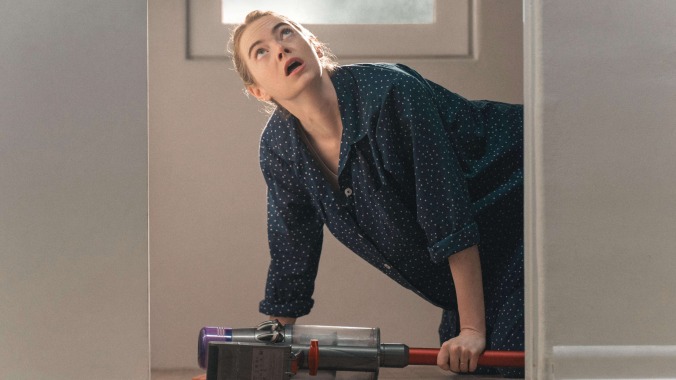Benny Safdie confirms The Curse’s ending was “always the ending”
"From the beginning, this was the ending," Safdie said of his and Nathan Fielder's head-scratcher of a finale

There has been and will be a lot to say about the ending of The Curse. Benny Safdie and Nathan Fielder’s 10-episode horror-comedy about the intersection of gentrification and reality TV seemingly tells you everything you need to know. Asher was cursed and, therefore, must be ejected from Earth. In a twist worthy of Shyamalan, his passive house sensed a new occupant (his baby) and did what it does best: Reduce unnecessary energy, e.g. Asher. It makes sense. Still, many remain flummoxed by the sudden and horrific burst of magical realism. “They just didn’t know how to end this thing,” says the strawman naysayer. Well, according to the show’s co-creator, co-writer, and co-star Benny Safdie, they started with the ending and worked backward.
“From the beginning, this was always the ending,” Safdie told the audience at last week’s screening of episode 10, rejecting any Monday morning show running that they didn’t know how to end this thing. When Film at Lincoln Center Assistant Programmer Maddie Whittle asked how he “reverse engineered” the show from that scene, Safdie, who spent much of the talk avoiding any specific readings of the episode, said, “Well, originally, he floats away but very slowly and then, practically speaking, we’re like ‘Oh, wouldn’t it be more exciting if it was reverse gravity and so then it was literally like falling off a cliff upwards.”
Safdie said that image is what they were chasing. However, it doesn’t exactly answer the question of why. Safdie, taking a page out of David Lynch’s playbook, decides to avoid spoiling the mystery and describe his intended effect of the happening.
I know there are a lot of questions about why it happened, and I imagine, why him? We have reasons, but it is very early in the gestation of all this, so the way I’d like to leave it is like, if you have a drawer, for example, and there was no handle on the drawer, how would you open it? Would you tip it forward, so that the drawer falls out? Would you use a knife to get into the crack and open it? Maybe you’ll take some tape and stick it to the front and pull it out that way. You’d come up with a lot of different ways to open that drawer, and what you’d find is the same information, but the way you got the information was your own. If you put a handle on the drawer, you just open it right up and find your information, so you lose a little bit of that process and that kind of searching, which I think is important for this.






![HBO teases new Euphoria, Larry David, and much more in 2026 sizzle reel [Updated]](https://img.pastemagazine.com/wp-content/avuploads/2025/12/12100344/MixCollage-12-Dec-2025-09-56-AM-9137.jpg)

































